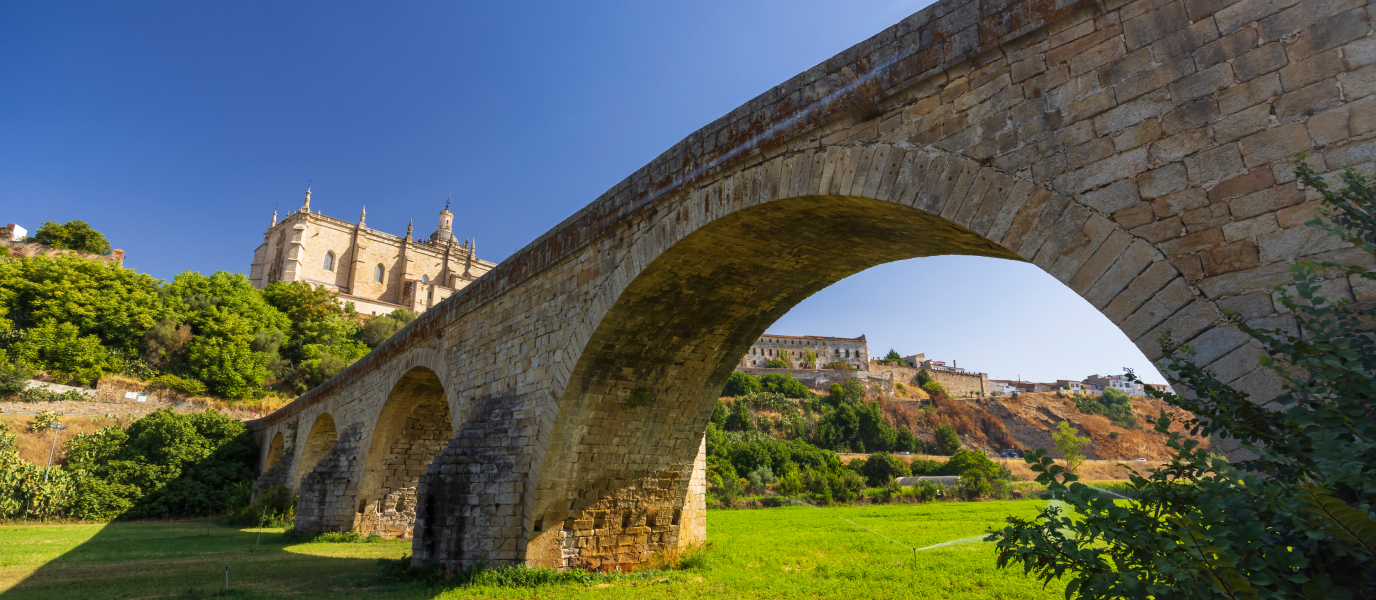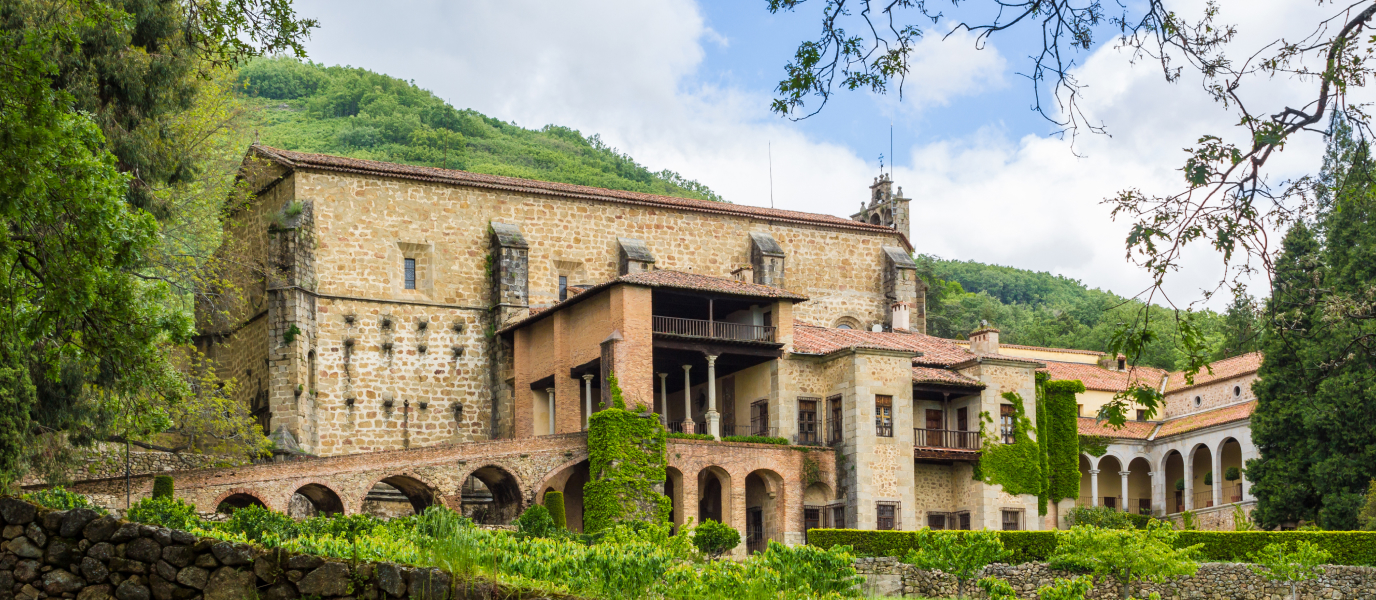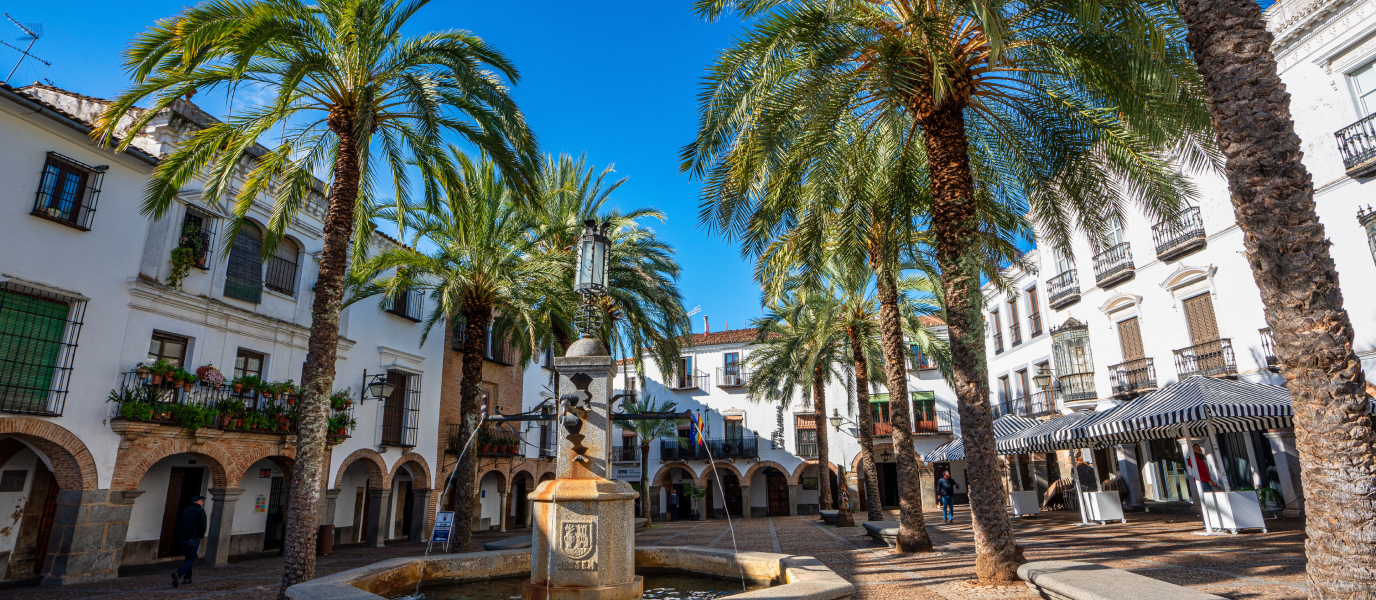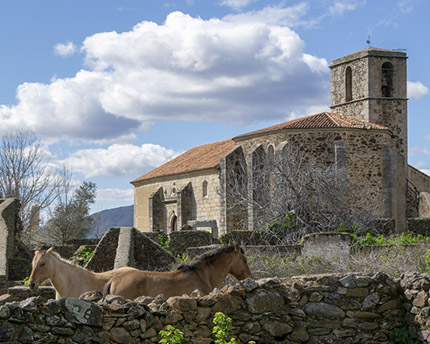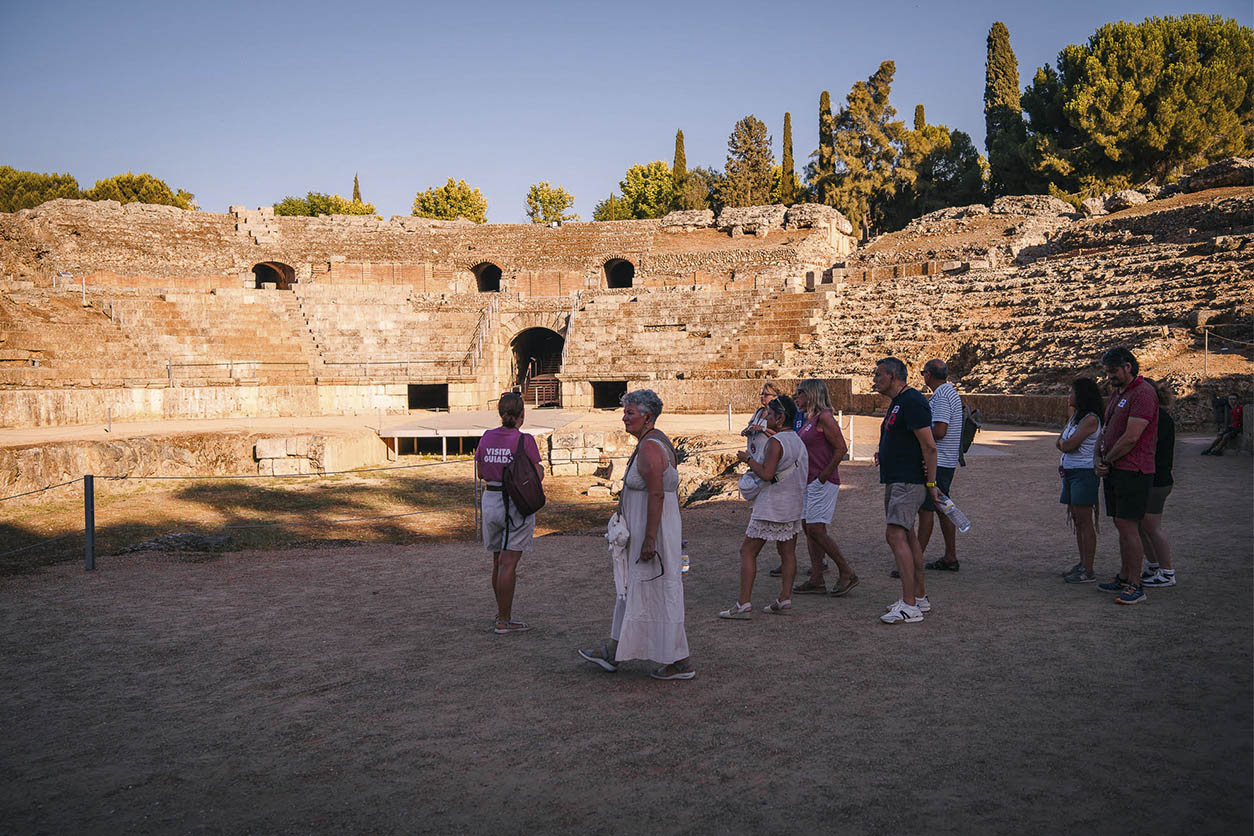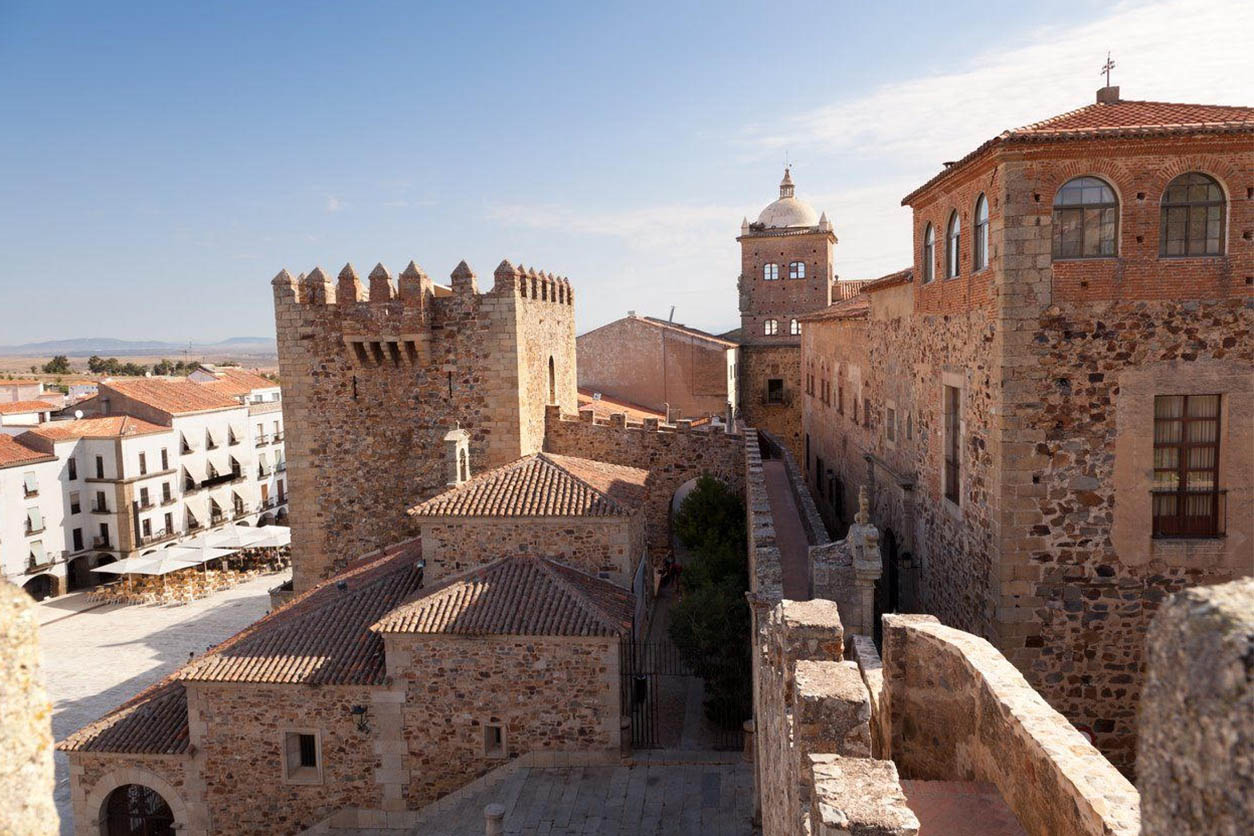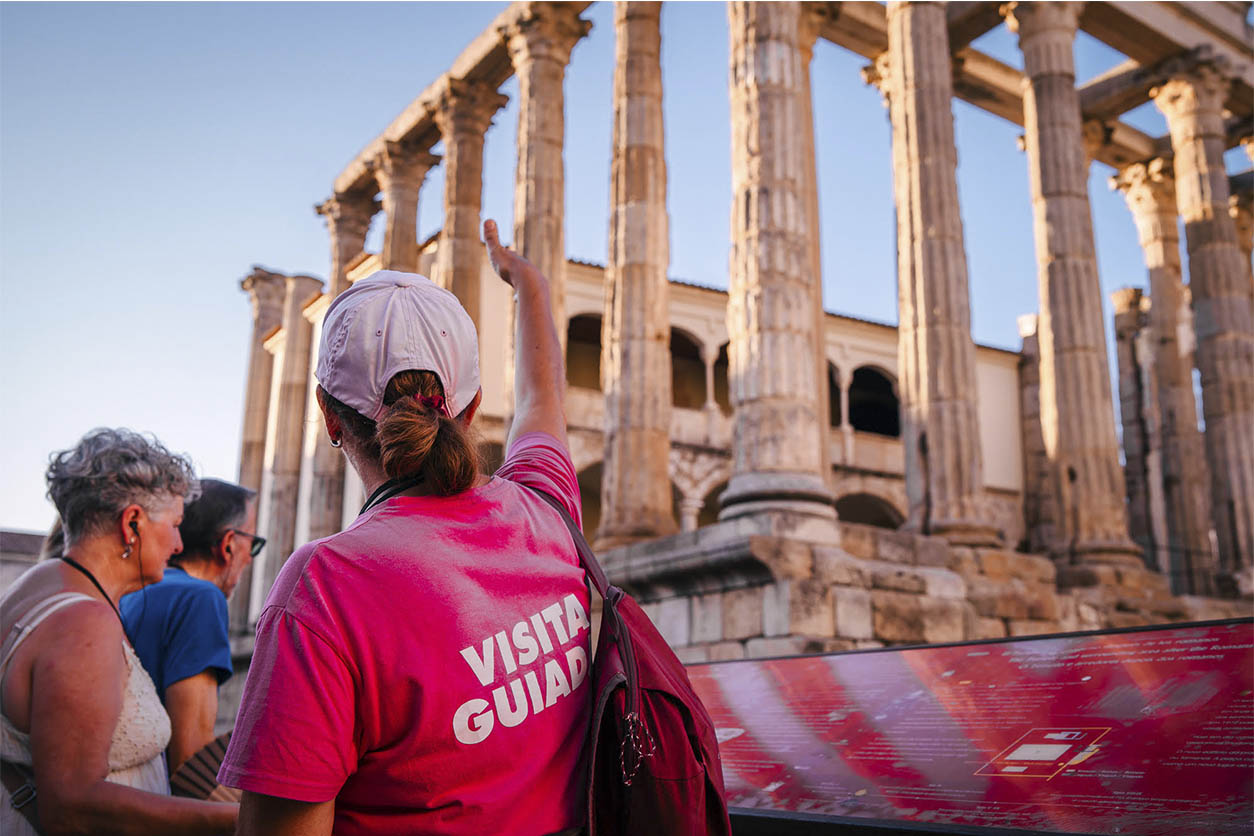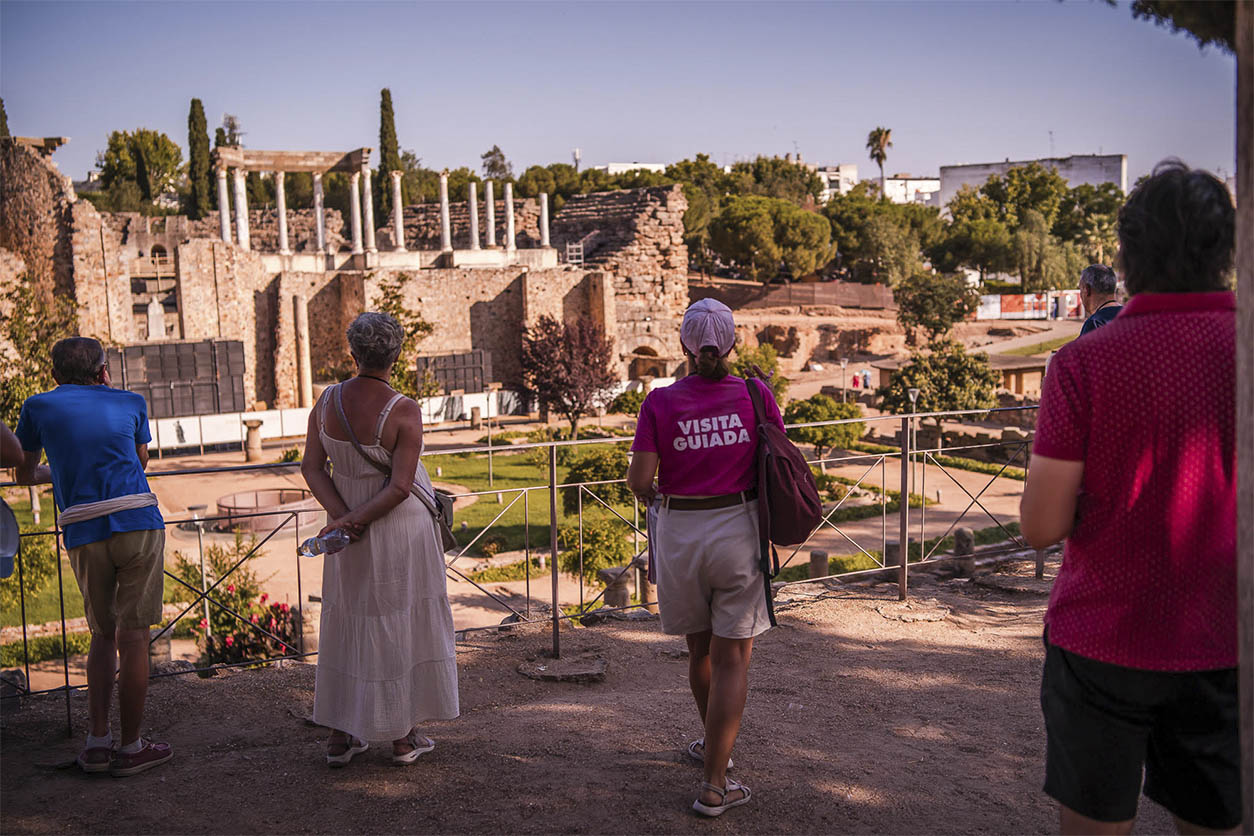This city in Cáceres is one of the best-kept tourism secrets in Extremadura and where your first steps will take you on a journey into the past. It is one of the oldest cities in Spain and retains its mystery of legends and strange travellers in its narrow, labyrinthine streets, which wind in and out of impressive walls between castles and cathedrals.
It is difficult to visit Coria without having the river Alagón in your mind, even though the Lisbon earthquake in 1755 caused a change in its course which, to everyone’s surprise, took it away from the city that grew up under its protection and which became the object of desire of several great noble families of Spain. In fact, it left the Roman bridge devoid of a river that can still be visited.
History of Coria
The first inhabitants of this fertile land watered by the river Alagón were the Vettones, back in the 7th century BC. In fact, Cauria, as it was later called by the Romans, is said to be one of the oldest towns in Extremadura and Spain.

Its rebellious and independent spirit was suffered by the Roman Empire, which decided to make it a stipendiary city, i.e. one that paid taxes and provided soldiers in exchange for Rome staying out of its way.
It was the Emperor Constantine who made it an episcopal see and having a bishop is what made its cathedral the chosen place for one of the most important relics of the Catholic Church which very few know is still within its walls: the tablecloth from Christ’s Last Supper.
Centuries of Visigoth and Arab domination (they maintained its impressive Roman wall) came to an end in 1212 when Alfonso VIII of Castile reconquered it.
Two centuries later it was the house of the first Duke of Alba, who took over the town which received numerous pilgrims seeking grace from the tablecloth relic and built a castle that still stands there, although it cannot be visited.
Wars, conflicts and the final departure of the Bishopric to Cáceres did not go down very well with Coria, which has now become a unique place for tourism.
Things to see in Coria
Coria’s history is marked on the streets, the cobblestones, the houses, the town hall and even the old prison. Nevertheless, the history of Coria is shaped by the famous relic kept in its cathedral which for centuries has attracted pilgrims and believers from all over the world.
Nowadays, history, art and legends combine in a visit full of anecdotes and where you should not miss, even if it is only the façade, the palace of the family of Rafael Sánchez Ferlosio, the writer who spent a large part of his life in Coria.
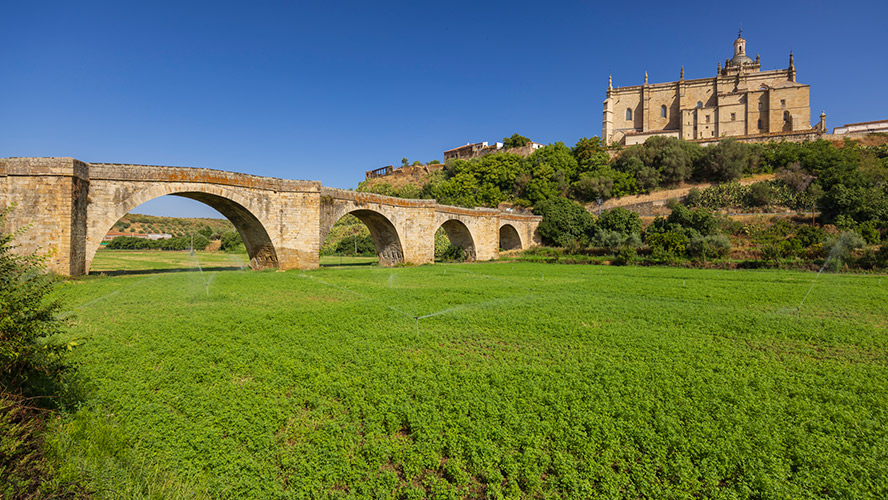
Saint Mary’s Cathedral
It is one of the main tourist and spiritual attractions in Coria. In its stones, which rise almost hanging from a wall of stone and vegetation towards the old bank of the river Alagón, you can read the passage of millions of believers and unbelievers who saw something beautiful in Coria.
They say that it was first a Visigothic temple, then a mosque and later a smaller Romanesque church that grew until it became a cathedral adorned with Plateresque style and strong Baroque additions, as is the case with its bell tower designed by Manuel de Lara Churriguera.
The door that is now used to enter the single-nave cathedral was not the main door, although the decoration of the balcony with medallions and angels gives us a clue as to what you will find in this incredible temple.
One thing that has attracted both parishioners and curious people alike is the relic of the sacred tablecloth from the Last Supper. No one knows exactly how one of the most admired objects of medieval times reached Coria. Many say that a bishop brought it from the Holy Land in the 8th century. Others say it was a trader who carried it. What is accredited is the papal bull of 1404, which already speaks of the tablecloth in one of the cathedral’s chest.
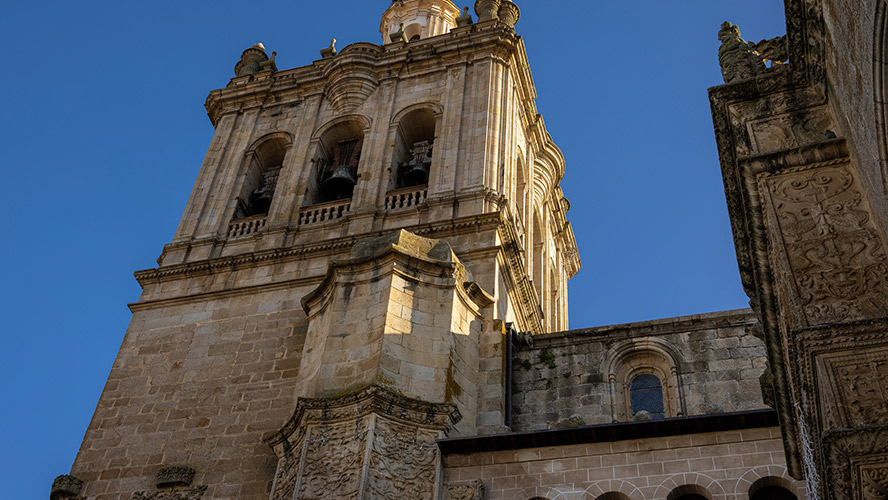
Castle of the Dukes of Alba
The first Duke of Alba ordered a castle to be built next to the city’s Roman wall that was a key place for faith at that time and for the crossroads to Portugal. The building was erected on the site of an ancient fortification built by the Templars in the 12th century.
The strange thing about this castle is that, as it is inside the city, it does not have a palatial form but maintains all its defensive elements to protect itself not from any enemy, but from the city itself.
It is a pity that the House of Alba does not want to open it for visits and we have to make do with its exterior and cross the moat from which we can see the pentagonal keep with its battlements.
Coria town hall
Strolling through the streets of the old Jewish quarter seems like walking through a labyrinth where you may get lost but you will always end up in a square that opens up to many other paths. You have to walk through them with your eyes open to avoid missing family and religious coats of arms, hidden doors or traces of the lives of literary greats such as Sánchez Ferlosio.
In one of the streets, Plaza de España, is the old Town Hall, a 15th century building that has undergone several alterations and is now the headquarters of the Municipal School of Music, and the Royal Prison.
The new Town Hall, in Plaza de San Pedro, is located next to the Tourist Office, where it is easy to get all the information you need for your visit.
Royal Prison
It is one of the most impressive buildings in Coria, especially the way in which it has been recovered and turned into an archaeological museum. They say that it was Charles II of Spain, the last Habsburg king, who built this prison in the 17th century and which was in use until 1981.
Inside, the dungeons and punishment cells are still preserved, giving an idea of what life was like for the prisoners behind these bars. In fact, you can still read the scribbles of those who demanded freedom while locked up.
On the first floor, all the cells are devoted to one of Coria’s main fiestas: the bullfighting festival during Saint John’s festivities.
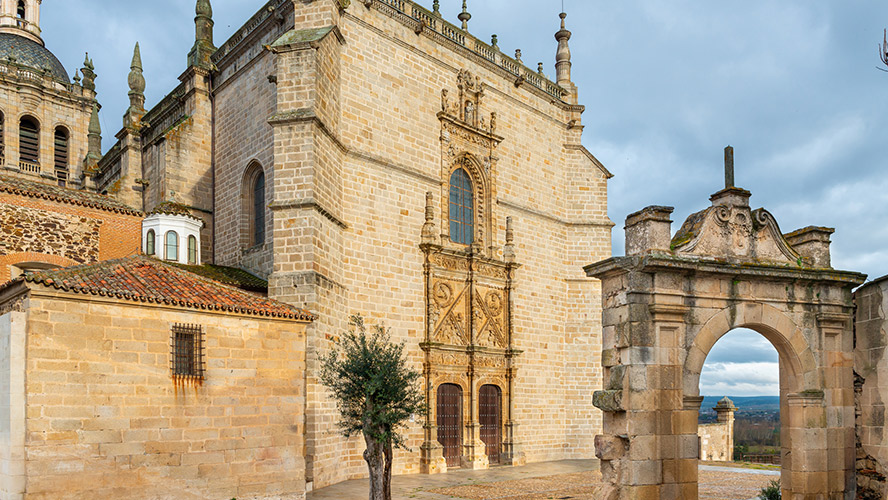
Coria’s City Walls
With more than one kilometre, Coria’s walls are one of the best-preserved Roman structures in Spain. The walls were shored up by the Muslims and the Christians but most of the stones are almost intact since the 3rd century AD.
The 1,100 metres of wall are lined by 20 towers and four gates, although only two are from the Roman period.
One of the most common strolls through Coria is to walk along the thick wall, which is about four metres wide, and which in some sections can reach a height of 14 metres, in search of some of its most amusing secrets: the funerary stelae that were reused for this construction.
The same is true of the Cathedral.
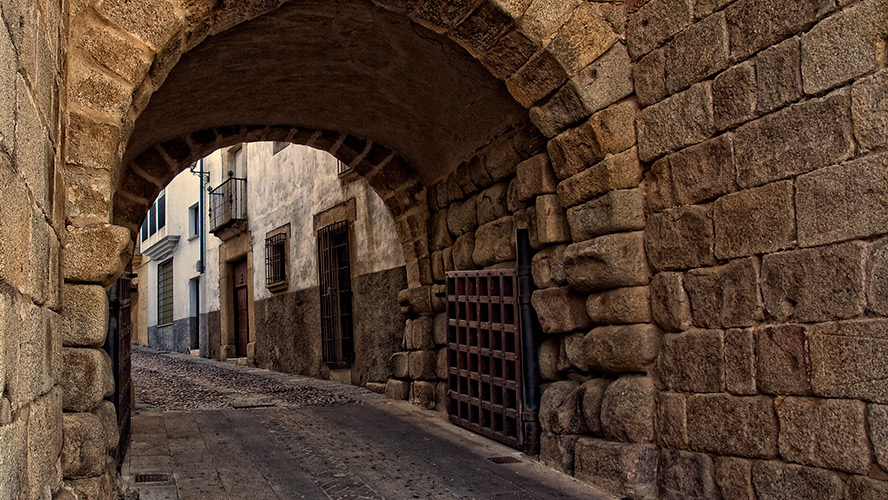
Where to eat in Coria
One of the best known restaurants is El Bobo de Coria, with traditional cuisine where meat and mushroom stews stand out. Nevertheless, it is not the only option: outside the walls, Mesón de Juan is also a notable restaurant, where typical local dishes such as lamb stew are served and traditional cooking is followed.
Another very good option is Restaurante Magar by Hotel Palacio Coria, located in the old Episcopal Palace, which has a terrace-viewpoint over the cathedral that gives a very special touch to any dish you eat.
Things to see nearby
Very close to Coria is Gata Sierra, on the border with Portugal, known in the area as La Raya (the border line). It is one of the most unknown regions of Extremadura but with a great wealth of landscape and art, as well as being a perfect place for rural and gastronomic tourism.
In the other direction, in the Alagón valley, you can also visit Galisteo, another walled village in the area, although in this case the walls date back to medieval times. You can also walk around Plasencia with its square, cathedral, palaces and walls.
If you want to see something greener, wilder and more natural, the Monfragüe National Park is a unique place full of viewpoints and waterfalls, where you can enjoy black and griffon vultures and imperial eagles, among other species.
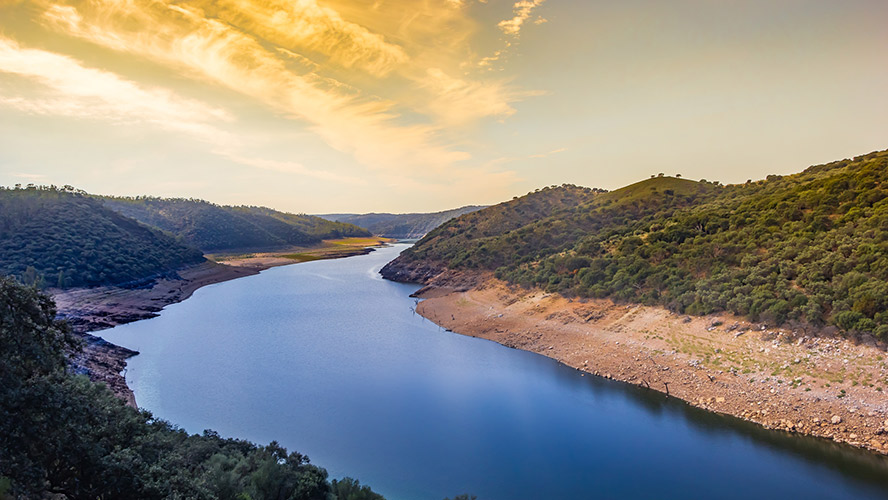
Where to stay in the province of Cáceres
There are many rural tourism options in the area but, if you want to return to Cáceres, the Barceló Cáceres V Centenario is a new and quiet place to rest before continuing your route. This hotel, which opened in 2018, is the perfect combination of style and modernity, always seeking visitors’ comfort with its lounges, gardens and terrace.
The Barceló Cáceres V Centenario is located six minutes away from a historic centre full of bars and restaurants where you can enjoy unique gastronomy both day and night.




































































